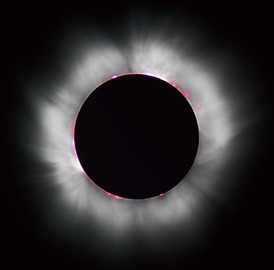en.wikipedia.org
Always private
DuckDuckGo never tracks your searches.
Learn MoreYou can hide this reminder in Search Settings
All regions
Argentina
Australia
Austria
Belgium (fr)
Belgium (nl)
Brazil
Bulgaria
Canada (en)
Canada (fr)
Catalonia
Chile
China
Colombia
Croatia
Czech Republic
Denmark
Estonia
Finland
France
Germany
Greece
Hong Kong
Hungary
Iceland
India (en)
Indonesia (en)
Ireland
Israel (en)
Italy
Japan
Korea
Latvia
Lithuania
Malaysia (en)
Mexico
Netherlands
New Zealand
Norway
Pakistan (en)
Peru
Philippines (en)
Poland
Portugal
Romania
Russia
Saudi Arabia
Singapore
Slovakia
Slovenia
South Africa
Spain (ca)
Spain (es)
Sweden
Switzerland (de)
Switzerland (fr)
Taiwan
Thailand (en)
Turkey
Ukraine
United Kingdom
US (English)
US (Spanish)
Vietnam (en)
Safe search: moderate
Strict
Moderate
Off
Any time
- Was this helpful?
- A solar eclipse occurs when the Moon passes between Earth and the Sun, thereby obscuring the view of the Sun from a small part of Earth, totally or partially.Such an alignment occurs approximately every six months, during the eclipse season in its new moon phase, when the Moon's orbital plane is closest to the plane of Earth's orbit. [1] In a total eclipse, the disk of the Sun is fully ...
space.com
An eclipse can only occur when a new or full moon is near a node. On Aug. 21, the moon is new only about 8 hours after arriving at its ascending node, and the alignment of the moon and sun is good ...cosmicrx.com
The South Node is the lunar node the Moon passes as it dips below the Earth's orbital plane around the Sun. Any eclipse can occur on either lunar node. The labels of the Nodes do not change, but their locations in space do, which allows them to change zodiac signs. ... It is uncharted territory, but it is where purpose and meaning lie.nubeowatches.com
Jul 1, 2024The term "ecliptic" is derived from the Greek word "ekleipsis," meaning "to fail" or "to be eclipsed," reflecting its association with solar and lunar eclipses. ... This tilt is due to the axial tilt of Earth—the angle between Earth's rotational axis and its orbital plane around the Sun. As a result of this tilt, the Sun's apparent position ...nasa.gov
This causes an eclipse of the Sun, or a solar eclipse. During a solar eclipse, the Moon casts a shadow onto Earth. There are three main types of solar eclipses: Total solar eclipse: A total solar eclipse is visible from a small area on Earth. The people who see the total eclipse are in the center of the Moon's shadow when it hits Earth.skyandtelescope.org
A solar eclipse occurs when the Moon passes between Earth and the Sun; a lunar eclipse happens when Earth slips between Sun and Moon. Both only take place when the Moon is on or near that plane of Earth's orbit around the Sun, at two points in the lunar orbit known as nodes .library.fiveable.me
Definition. Orbital inclination is the angle between the orbital plane of an object and a reference plane, usually the plane of the celestial equator or the ecliptic. ... In eclipsing binaries, the orbital inclination determines whether eclipses are observable; higher inclinations (close to 90°) increase the likelihood of detectable eclipses.cards.algoreducation.com
cards.algoreducation.com
https://cards.algoreducation.com › en › content › Qz0sY-1X › understanding-eclipses
Solar and lunar eclipses occur during "eclipse seasons," the periods when the Moon's orbital plane intersects with Earth's orbital plane around the Sun at points known as nodes, and these nodes align with the Sun. The type of solar eclipse—total, annular, hybrid, or partial—depends on the relative distances and sizes of the Sun and Moon.tfaws.nasa.gov
• Eclipse • Solar Flux • Simple View Factor • 2-Body Problem • Conservation of Energy • Conservation of Momentum • Kepler's Laws ... Example: Determine Planet Orbital Periods Using Kepler's Third Law Example: Geostationary Orbit. Lesson Contents (3 of 5) 10 Part 3 -- Perturbed Orbits Governing Differential Equationcelestron.com
Total Solar Eclipse — an eclipse that occurs at perigee, the point in the Earth's orbit where the Earth lies closest to the Sun. Annular Solar Eclipse — an eclipse that occurs at apogee, the point in the Earth's orbit where the Earth lies farthest from the Sun. The Five Stages of a Total Solar Eclipse: First contact: partial eclipse begins.Can’t find what you’re looking for?
Help us improve DuckDuckGo searches with your feedback
